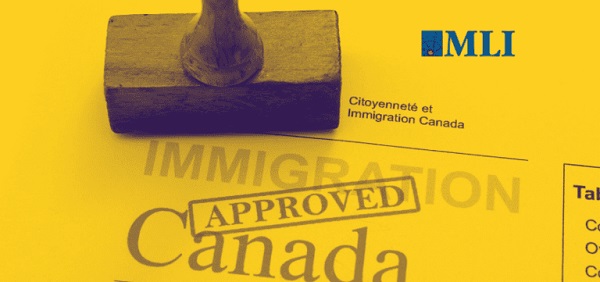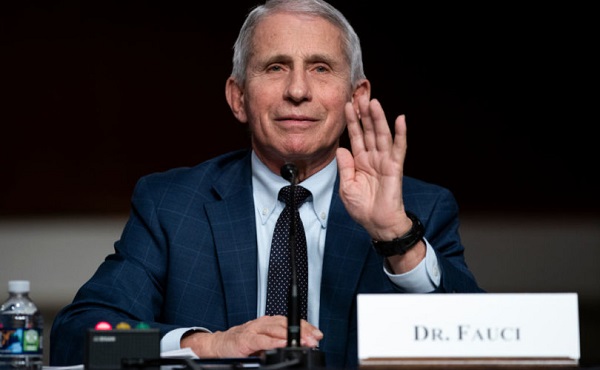Economy
Federal mismanagement to blame for Canada’s immigration backlash

From the Macdonald Laurier Institute
By Sonia Orlu for Inside Policy
Canada’s welcoming attitude towards newcomers makes it one of the most sought-after places to live in the world. However, this image is being tested by a growing backlash against immigration. Immigrants make up 23 per cent of the population, yet economic, social, and cultural anxieties are increasingly challenging the country’s commitment to diversity. More than four-in-ten Canadians now agree – either strongly (23 per cent) or somewhat (21 per cent) – with the statement, “There is too much immigration to Canada.” It is crucial to understand that this backlash is not rooted in opposition to immigration or immigrants themselves, but rather in frustration over mismanagement and inadequate planning by the federal government. It reflects a growing unease about the country’s economic outlook, raising urgent questions about how Canada can uphold its values while addressing legitimate and pressing concerns.
Public reactions and political responses
Canadian political leaders have generally maintained a measured tone on immigration, focusing on economic pressures and service delivery rather than hostility toward immigrants. However, tensions are rising, and a thoughtful debate is increasingly needed.
Prime Minister Justin Trudeau has accused the Conservative Party of spreading misinformation to stoke fears about immigration. Such remarks risk alienating those with legitimate critiques of his administration’s policies and practices. Conservative Leader Pierre Poilievre has linked immigration to housing shortages, criticizing Trudeau’s policies as disconnected from infrastructure needs. This aligns with public frustrations over housing availability and the need for better coordination between immigration levels and capacity. Quebec Premier François Legault echoed similar sentiments, raising issues of resource management and culture. His critics accuse him of xenophobia, but dismissive responses like Immigration Minister Marc Miller’s remark that people are “always blaming immigrants” overlook genuine challenges and deepen frustration.
These exchanges illustrate the delicate balance required in navigating immigration policy and public sentiment. Canadians’ attitudes toward immigration are more nuanced than a simple pro- or anti-immigration divide. Most Canadians aren’t driven by fear or racism; rather, they are focused on how immigration impacts housing affordability, strains public finances, and increases job competition. While apprehension about immigration levels is growing, attitudes toward immigrants themselves remain largely positive. In fact, more than four-in-ten Canadians (42 per cent) say that immigrants make their community a better place, with fewer than one-in-ten (9 per cent) feeling that they make it worse. Still, public concerns must be addressed to prevent further polarization.
The housing crisis: a catalyst for frustration
A significant driver of the immigration backlash is the housing crisis. The Canada Mortgage and Housing Corporation (CMHC) reported in 2024 that Canada needs an additional 3.5 million housing units by 2030 to restore affordability. Cities like Toronto and Vancouver have seen housing prices soar, partly due to increased demand from population growth.
The “housing theory of everything” highlights how housing affects multiple societal issues – such as economic inequality, social mobility, and political polarization. Immigration is no exception. Housing shortages drive up costs, deepen inequality, and create competition between immigrants and long-term residents, eroding social trust and cohesion.
The rise in temporary residents, including international students and temporary foreign workers, compounds these issues. Immigration, Refugees and Citizenship Canada (IRCC) reports that the number of temporary residents increased by over 50 per cent from 2017 to 2022 and continued to rise sharply into 2024. This influx contributes to increased demand in the rental housing market, particularly in urban centres with large universities, driving up prices and reducing availability.
The Trudeau government’s ambitious plan to admit nearly 500,000 new permanent residents annually by 2026 marks one of the highest per-capita immigration rates globally. By comparison, Canada admitted around 200,000 landed immigrants per year in the 1990s and 250,000 per year in the early 2010s. Without matching investments in infrastructure and housing, these elevated immigration levels – often referred to as “mass immigration” – could exacerbate housing shortages, strain public services, and heighten public frustration. Internal documents from Immigration, Refugees, and Citizenship Canada revealed that as early as 2022, officials warned that large increases in immigration could worsen housing affordability and strain public services. Yet, no substantive steps were taken by the government to revise its targets.
Given the realistic timelines for development, it is improbable that infrastructure can keep pace with rapid population growth. The construction industry faces labour shortages, regulatory hurdles, and lengthy timelines for project completion – often several years. The CMHC maintains that due to these complexities, expecting cities to rapidly scale up infrastructure to meet immediate demands is unrealistic.
If these housing issues are not resolved, public frustration could escalate, potentially shifting from concerns about immigration policy to resentment toward immigrants themselves.
Cultural integration: balancing diversity and cohesion
Economic challenges, such as housing affordability, often intersect with social and cultural anxieties. As communities experience rapid change and strained resources, questions arise about society’s ability to integrate newcomers without compromising its social fabric. While only about 4 per cent of Canadians express fears that immigration weakens local culture and identity, concerns about the effectiveness of integration are more widespread. In fact, approximately half of Canadians are concerned that some immigrants may not be adopting Canadian values or fully participating in the broader community. When asked which values immigrants should adopt, Canadians often prioritize language proficiency and respect for the country’s history and culture, highlighting the importance placed on cultural integration. Interestingly, both native-born and foreign-born Canadians largely agree on the values newcomers should embrace, indicating a shared vision for integration.
Canada’s sense of nationhood is deeply tied to its history of migration and its commitment to cultural and ethnic diversity. However, diversity is not inherently beneficial in all forms; its value depends on whether it leads to greater tolerance, creativity, or economic growth. When cultural and ethnic diversity is celebrated without deliberate efforts to foster interaction and promote unity, it risks becoming fragile. Poorly managed diversity can lead to social fragmentation, lower trust, and weakened civic engagement.
The challenges of integration are well-documented. Language barriers, different social norms, and unfamiliarity with Canadian institutions can make it difficult for immigrants to fully integrate. This can sometimes lead to the formation of cultural enclaves, where newcomers find comfort in communities with shared backgrounds but have limited interaction with the broader society. While these enclaves provide crucial support, they can inadvertently hinder full participation in Canadian life. Sociologist Robert Putnam found that, in the short term, diversity can reduce social capital and lower community engagement, particularly when institutions fail to promote integration – a concept he refers to as “hunkering down.” In such cases, both newcomers and long-term residents may feel isolated.
Despite these challenges, diversity, when managed effectively, can yield benefits. Exposure to different cultures fosters creativity, innovation, and economic growth, even though research suggests that immigration itself is neither inherently good nor bad for the economy. Cities like Toronto and Vancouver have thrived in part due to their multicultural populations, which have helped them become global hubs for technology and the arts. Additionally, evidence shows that successful integration is common in Canada. Many immigrants actively embrace Canadian values, contribute to the economy, and participate in civic life. The majority of eligible immigrants become Canadian citizens, demonstrating a strong commitment to their new country. Many immigrants choose Canada precisely because they align with its principles of democracy, equality, and respect for human rights. Cultural integration, in the end, is a dynamic process – one that, when approached thoughtfully, strengthens rather than weakens the social fabric.
Bridging policy failures with sustainable solutions
Addressing public frustrations with immigration requires a serious reassessment of the policies that have exacerbated these concerns.
First and foremost, tackling the housing crisis through integrated planning is essential. Governments should incentivize affordable housing development and reform zoning laws to allow for higher-density projects. Recognizing the realistic timelines for construction and development, planning must begin immediately and be synchronized with immigration targets. Public sentiment strongly supports this approach. A recent Nanos Research survey found that 72 per cent of Canadians want to reduce immigration levels until housing becomes affordable.
Aligning immigration levels with the country’s capacity is crucial. Dynamic targets based on real-time economic data and infrastructure development would ensure that immigration aligns with Canada’s ability to provide services and opportunities. Returning to historical admission levels of 200,000 to 250,000 immigrants per year could help ease pressure on housing and public services. Adjusting the composition of immigration streams is equally important.
Temporary measures – such as pausing or reducing programs for international students and temporary foreign workers – could relieve immediate pressures while infrastructure catches up. For instance, although international students contributed over $30 billion to the economy in 2022, lowering their numbers could help reduce housing demand in university towns. Likewise, managing temporary foreign worker intake would address labour shortages without overwhelming resources.
Effective integration and support services must also be given priority. This should begin with implementing consistent selective immigration measures that evaluate an applicant’s potential to integrate both economically and culturally into Canadian society. Such measures would reduce reliance on extensive post-arrival support and help ease cultural tensions. According to a 2018 Angus Reid survey, two-in-three Canadians believe that greater emphasis should be placed on screening for alignment with Canadian values. However, it’s important to note that defining “Canadian values” can be subjective and risks being perceived as discriminatory.
Improvements to post-arrival services like community centres offering language classes, job search support, and cultural orientation programs are necessary to significantly ease the transition for newcomers. Research shows that when immigrants are effectively integrated, they are more likely to find employment, increasing tax contributions and reducing their reliance on social services. Additionally, well-integrated immigrants are more likely to engage in civic life, fostering social cohesion and strengthening community resilience.
Cultural diversity, while valuable, cannot be assumed to sustain itself without active support. Integration is not just about where people live or demographic representation; it also involves cultivating a shared sense of purpose and belonging. Successful integration depends on a reciprocal relationship: immigrants need the resources and opportunities to succeed, and in turn, they must engage with and contribute to the broader societal and cultural framework. Without deliberate policies that encourage community engagement, cross-cultural dialogue, and mutual respect, there is a risk that cultural diversity will falter.
Finally, responsible political discourse is crucial. Leaders must choose their words carefully, as rhetoric shapes public perceptions. By fostering nuanced and empathetic dialogue, they can bridge the gap between public concerns and policy realities, preserving national unity.
Canada stands at a crossroads. While immigration has long been one of our greatest assets, the current backlash highlights cracks in its management. This is not a rejection of immigrants – it’s a call for better policies and improved management. High immigration levels without careful planning will continue to harm our society. Our leaders now face a choice: fan the flames of division or unite the country around meaningful, evidence-based solutions.
Sonia Orlu is a Ph.D. student in Political Science at Simon Fraser University and a commentator on politics and culture. She is a contributing writer to the Macdonald-Laurier Institute.
Business
Trump: China’s tariffs to “come down substantially” after negotiations with Xi

 MxM News
MxM News
Quick Hit:
President Trump said the 145% tariff rate on Chinese imports will drop significantly once a deal is struck with Chinese President Xi Jinping, expressing confidence that a new agreement is on the horizon.
Key Details:
- Trump said the current 145% tariff rate on China “won’t be anywhere near that high” after negotiations.
- He pointed to his relationship with Xi Jinping as a reason for optimism.
- The White House said it is preparing the groundwork for a deal, and Treasury officials expect a “de-escalation” of the trade war.
Diving Deeper:
President Donald Trump on Tuesday told reporters that the steep tariff rate currently imposed on Chinese imports will come down substantially after his administration finalizes a new trade deal with Chinese President Xi Jinping. While the current level stands at 145%, Trump made clear that number was temporary and would be adjusted following talks with Beijing.
“145 percent is very high. It won’t be that high, it’s not going to be that high … it won’t be anywhere near that high,” Trump said from the Oval Office, signaling a shift once a bilateral agreement is reached. “It will come down substantially, but it won’t be zero.”
The tariff, which Trump previously described as “reciprocal,” was maintained on China even after he delayed similar penalties on other trading partners. Those were cut to 10% and paused for 90 days to allow room for further negotiation.
“We’re going to be very nice. They’re going to be very nice, and we’ll see what happens. But ultimately, they have to make a deal because otherwise they’re not going to be able to deal in the United States,” Trump said, reinforcing his view that the U.S. holds the leverage.
Trump’s remarks come as markets remain wary of ongoing trade tensions, though the White House signaled progress, saying it is “setting the stage for a deal with China.” The president cited his personal rapport with Xi Jinping as a key factor in his confidence that an agreement can be reached.
“China was taking us for a ride, and it’s not going to happen,” Trump said. “They would make billions a year off us and build up their military with our money. That’s over. But we’ll still be good to China, and I think we’ll work together.”
Treasury Secretary Scott Bessent also said Tuesday that he expects a cooling of trade hostilities between the two nations, according to several reports from a private meeting with investors.
As the 90-day pause on other reciprocal tariffs nears its end, Trump emphasized that his team is prepared to finalize deals quickly. “We’ve been in talks with many, many world leaders,” he said, expressing confidence that talks will “go pretty quickly.”
White House Press Secretary Karoline Leavitt added that the administration has received 18 formal proposals from other countries engaged in trade negotiations, another sign that momentum is building behind Trump’s broader push to restructure global trade in favor of American workers and businesses.
(Li Xueren/Xinhua via AP)
2025 Federal Election
Next federal government should end corporate welfare for forced EV transition

From the Fraser Institute
By Tegan Hill and Jake Fuss
Corporate welfare simply shifts jobs and investment away from other firms and industries—which are more productive, as they don’t require government funding to be economically viable—to the governments’ preferred industries and firms, circumventing the preferences of consumers and investors. And since politicians spend other people’s money, they have little incentive to be careful investors.
General Motors recently announced the temporary closure of its electric vehicle (EV) manufacturing plant in Ontario, laying off 500 people because its new EV isn’t selling. The plant will shut down for six months despite hundreds of millions in government subsides financed by taxpayers. This is just one more example of corporate welfare—when governments subsidize favoured industries and companies—and it’s time for the provinces and the next federal government to eliminate it.
Between the federal government and Ontario government, GM received about $500 million to help fund its EV transition. But this is just one example of corporate welfare in the auto sector. Stellantis and Volkswagen will receive about $28 billion in government subsidies while Honda is promised $5 billion.
More broadly, from 2007 to 2019, the last pre-COVID year of data, the federal government spent an estimated $84.6 billion (adjusted for inflation) on corporate welfare while provincial and local governments spent another $302.9 billion. And crucially, these numbers exclude other forms of government support such as loan guarantees, direct investments and regulatory privileges, so the actual cost of corporate welfare during this period was much higher.
Of course, politicians claim that corporate welfare benefits workers. Yet according to a significant body of research, corporate welfare fails to generate widespread economic benefit. Think of it this way—if the businesses that received subsidies were viable to begin with, they wouldn’t need government support. So unprofitable companies are kept in business through governments’ support, which can prevent resources, including investment and workers, from moving to profitable companies, hurting overall economic growth.
Put differently, rather than fuelling economic growth, corporate welfare simply shifts jobs and investment away from other firms and industries—which are more productive, as they don’t require government funding to be economically viable—to the governments’ preferred industries and firms, circumventing the preferences of consumers and investors. And since politicians spend other people’s money, they have little incentive to be careful investors.
Governments also must impose higher tax rates on everyone else to pay for corporate welfare. In turn, higher tax rates discourage entrepreneurship and business investment—again, which fuels economic growth. And the higher the tax rates, the more economic activity they discourage.
GM’s EV plant shut down once again proves that when governments try to engineer the economy with corporate welfare, workers will ultimately lose. It’s time for the provinces and the next federal government—whoever it may be—to finally put an end to this costly and ineffective policy approach.
-

 2025 Federal Election1 day ago
2025 Federal Election1 day agoBREAKING: THE FEDERAL BRIEF THAT SHOULD SINK CARNEY
-

 2025 Federal Election2 days ago
2025 Federal Election2 days agoCHINESE ELECTION THREAT WARNING: Conservative Candidate Joe Tay Paused Public Campaign
-

 2025 Federal Election2 days ago
2025 Federal Election2 days agoOttawa Confirms China interfering with 2025 federal election: Beijing Seeks to Block Joe Tay’s Election
-

 2025 Federal Election2 days ago
2025 Federal Election2 days agoReal Homes vs. Modular Shoeboxes: The Housing Battle Between Poilievre and Carney
-

 2025 Federal Election22 hours ago
2025 Federal Election22 hours agoMark Carney Wants You to Forget He Clearly Opposes the Development and Export of Canada’s Natural Resources
-

 International14 hours ago
International14 hours agoPope Francis’ body on display at the Vatican until Friday
-

 Business1 day ago
Business1 day agoHudson’s Bay Bid Raises Red Flags Over Foreign Influence
-

 2025 Federal Election22 hours ago
2025 Federal Election22 hours agoCanada’s pipeline builders ready to get to work


